Nikolai
TY 4 Stroke God
It was fun but really made me want my sled. They are heavy, awkward handling beasts in the trees.
The Sidewinder handled a lot better, thats definitely a way better choice to base a tube chassis off of.
The Sidewinder handled a lot better, thats definitely a way better choice to base a tube chassis off of.
Nikolai
TY 4 Stroke God
Well, this was after riding it. Appears that everything is fine. Oil looked perfect as well.
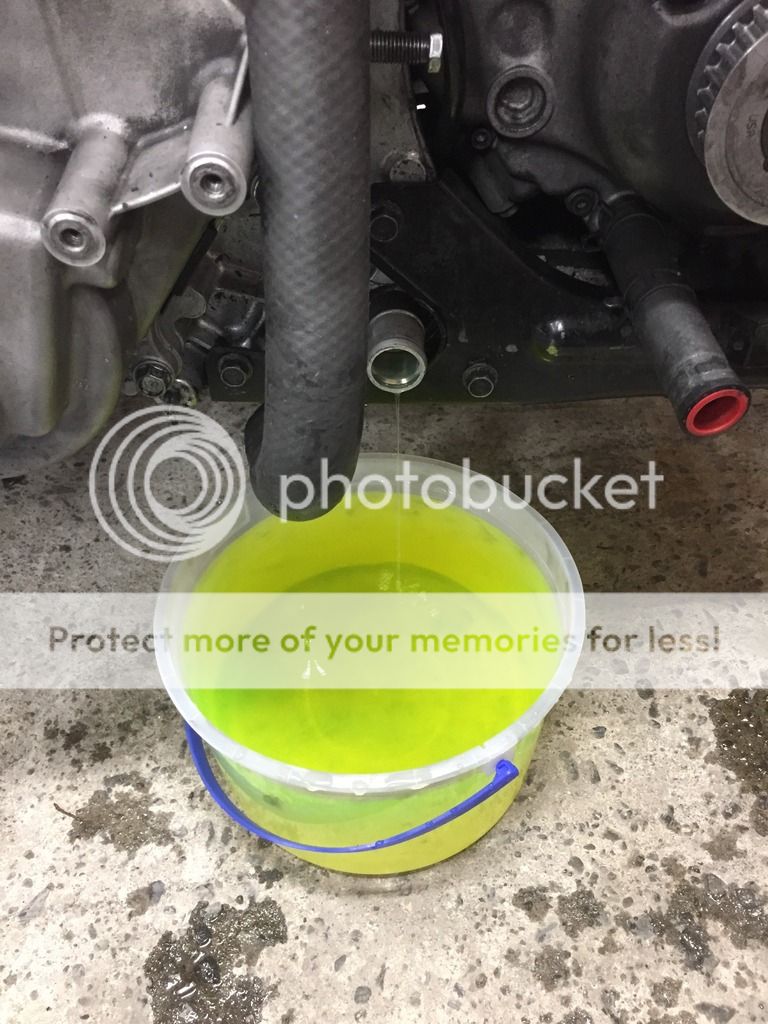

Nikolai
TY 4 Stroke God
Tube chassis is a go, ordered Viper parts today.
I will be selling my CR Nytro front end if anyone is interested, I'll post it in the classifieds along with a bunch of other Nytro stuff.
My current sled will get finished, just won't be saving every gram anymore as my focus shifts to the Viper build.
I will be selling my CR Nytro front end if anyone is interested, I'll post it in the classifieds along with a bunch of other Nytro stuff.
My current sled will get finished, just won't be saving every gram anymore as my focus shifts to the Viper build.

kinger
VIP Member
What???? Viper parts what?
Sent from my iPhone using Tapatalk
Sent from my iPhone using Tapatalk
Nikolai
TY 4 Stroke God
I've been wanting to build a full tube chassis and have a buddy that wants to put an Apex motor in one. After looking the Viper over, they seem to have the easiest suspension layout up front to build a tube chassis. It won't be complicated, in fact it will be designed to be incredibly simple, extremely tough, and relatively inexpensive to build. The Sidewinder works great, so instead of reinventing the wheel I'm copying it but with a couple changes. I love the Nytro, but no sense in spending more time on that chassis.
I will have the lower a-arm frame member, upper a-arm & shock frame member & front tunnel section to jig. Front & rear suspension mounts and driveshaft location will be stock. Handling is the highest priority, so none of the important measurements will be changed.
- It will use the factory front Viper/Procross suspension. Not only does it handle well, but the a-arms are simple and lightweight and the geometry is spot on. No need to reinvent the wheel here. My only change will be slightly modified upper a-arms to get more of triangle out of the tube for a stronger & simplified frame.
- Rear suspension mounts will be jig'd as well and a factory Procross/Sidewinder skid used. They work well, ride good, and are lightweight. Again, no need to reinvent the wheel. With chromoly arms they're a 36 lb suspension.
- Driveshaft location will be the same, and drivers will be 7-tooth 3" pitch like the Sidewinder. This will ensure factory suspension mounting holes don't need to change.
I will be using the Apex chaincase setup for a few reasons.
1. The tube work is simpler around the chaincase and can be symmetrical on both sides
2. They are relatively lightweight, very durable, and inexpensive to source. Dealer has an abundance of extra parts on hand.
3. Puts the jackshaft in the tunnel and brake back on the jackshaft, which allows the secondary clutch to be lowered, thus allowing the motor to be lowered, which allows for a smaller steering hoop and pyramid and more room for charge tube.
I looked hard at using the Viper chaincase and a belt drive but the cost, complexity, and raised motor turned me away.
My end goal is to have the cleanest tube chassis 4-stroke turbo on the snow, that handles better than a factory Sidewinder and weighs less than 400 lbs, all while being bulletproof. the Apex version will undoubtedly be heavier but should still be under 450 lbs with a big turbo and 162. Strength will not be sacrificed for weight.
It won't be high dollar. No carbon fiber & no titanium, just not in the budget. Most likely an .063 or .080 aluminum tunnel, powder coated, and basic tubing to reinforce the the aluminum, similar to the PowerHouse Customs tunnel. I want a chassis that's easy and simple enough to replicate in 3-4 weeks of building.
I will continue to plug away at my Nytro while I work on the new jig.
Long story, but I've been drawing on napkins and taking notes for a few weeks now and it was time to make it happen.
I will have the lower a-arm frame member, upper a-arm & shock frame member & front tunnel section to jig. Front & rear suspension mounts and driveshaft location will be stock. Handling is the highest priority, so none of the important measurements will be changed.
- It will use the factory front Viper/Procross suspension. Not only does it handle well, but the a-arms are simple and lightweight and the geometry is spot on. No need to reinvent the wheel here. My only change will be slightly modified upper a-arms to get more of triangle out of the tube for a stronger & simplified frame.
- Rear suspension mounts will be jig'd as well and a factory Procross/Sidewinder skid used. They work well, ride good, and are lightweight. Again, no need to reinvent the wheel. With chromoly arms they're a 36 lb suspension.
- Driveshaft location will be the same, and drivers will be 7-tooth 3" pitch like the Sidewinder. This will ensure factory suspension mounting holes don't need to change.
I will be using the Apex chaincase setup for a few reasons.
1. The tube work is simpler around the chaincase and can be symmetrical on both sides
2. They are relatively lightweight, very durable, and inexpensive to source. Dealer has an abundance of extra parts on hand.
3. Puts the jackshaft in the tunnel and brake back on the jackshaft, which allows the secondary clutch to be lowered, thus allowing the motor to be lowered, which allows for a smaller steering hoop and pyramid and more room for charge tube.
I looked hard at using the Viper chaincase and a belt drive but the cost, complexity, and raised motor turned me away.
My end goal is to have the cleanest tube chassis 4-stroke turbo on the snow, that handles better than a factory Sidewinder and weighs less than 400 lbs, all while being bulletproof. the Apex version will undoubtedly be heavier but should still be under 450 lbs with a big turbo and 162. Strength will not be sacrificed for weight.
It won't be high dollar. No carbon fiber & no titanium, just not in the budget. Most likely an .063 or .080 aluminum tunnel, powder coated, and basic tubing to reinforce the the aluminum, similar to the PowerHouse Customs tunnel. I want a chassis that's easy and simple enough to replicate in 3-4 weeks of building.
I will continue to plug away at my Nytro while I work on the new jig.
Long story, but I've been drawing on napkins and taking notes for a few weeks now and it was time to make it happen.

kinger
VIP Member
Sick! However I have never seen a tubie with aluminum tunnel get down to 400lbs with stock chaincase, suspension, driveline, etc. What are you doing to get that light? A sidewinder runs almost 650 lbs.
Love the brainstorming, it helps me as I will build my last dream 4 stroked chassis then focus on kids sleds and other activities after that.
Love the brainstorming, it helps me as I will build my last dream 4 stroked chassis then focus on kids sleds and other activities after that.
Nikolai
TY 4 Stroke God
I'm basing the weight off my Nytro. My Nytro was 449. Since it was weighed...
- 4 lbs WE air shocks (Floats -3 lbs)
- 6 lbs CF body work
- 5 lbs tunnel work
- 11 lbs track (156 Conquer would save 4 more lbs)
-1.5 lbs ski mods
-1.5 lbs steering modifications
- 3 lbs Timbersled skid (which is still 38 lbs)
- 2 lbs turbo kit mods
That's 34 lbs and I did some other stuff as well(any had plenty more things in store). So that's 415 lbs dry with the heavy skinz front end. I'm confident I can shave significant weight out of the chassis as my Nytro subframe is 15 lbs and my diecast sides are 10.5 lbs for both. The Sidewinder spindles are lighter, the a-arms are lighter and can be built extremely light due to there design. Chassis will be much simpler.
Just as an example, I believe the entire front half of a tubed Viper could be built with less than 30 ft of tube including the steering hoop and chaincase hoops. Even using 1" x .035 for maximum strength, that's only 10.8 lbs.
- 4 lbs WE air shocks (Floats -3 lbs)
- 6 lbs CF body work
- 5 lbs tunnel work
- 11 lbs track (156 Conquer would save 4 more lbs)
-1.5 lbs ski mods
-1.5 lbs steering modifications
- 3 lbs Timbersled skid (which is still 38 lbs)
- 2 lbs turbo kit mods
That's 34 lbs and I did some other stuff as well(any had plenty more things in store). So that's 415 lbs dry with the heavy skinz front end. I'm confident I can shave significant weight out of the chassis as my Nytro subframe is 15 lbs and my diecast sides are 10.5 lbs for both. The Sidewinder spindles are lighter, the a-arms are lighter and can be built extremely light due to there design. Chassis will be much simpler.
Just as an example, I believe the entire front half of a tubed Viper could be built with less than 30 ft of tube including the steering hoop and chaincase hoops. Even using 1" x .035 for maximum strength, that's only 10.8 lbs.
Not to throw a wrench into the gears. But the new lower chain case location on the new 2018 sidewinder (CAT MC) is suppose to be much better. And since your building from scratch. I would also recommend going +forward on the spindle location. I know I'm bias but it also really does make a big difference.
heres a pic of our upper arm. its made of 5/8 .049 wall cromo From what we could measure its the same as the stock upper, in tube dimension. Its pretty light. Its pretty awesome on how strong a simple triangle can be.
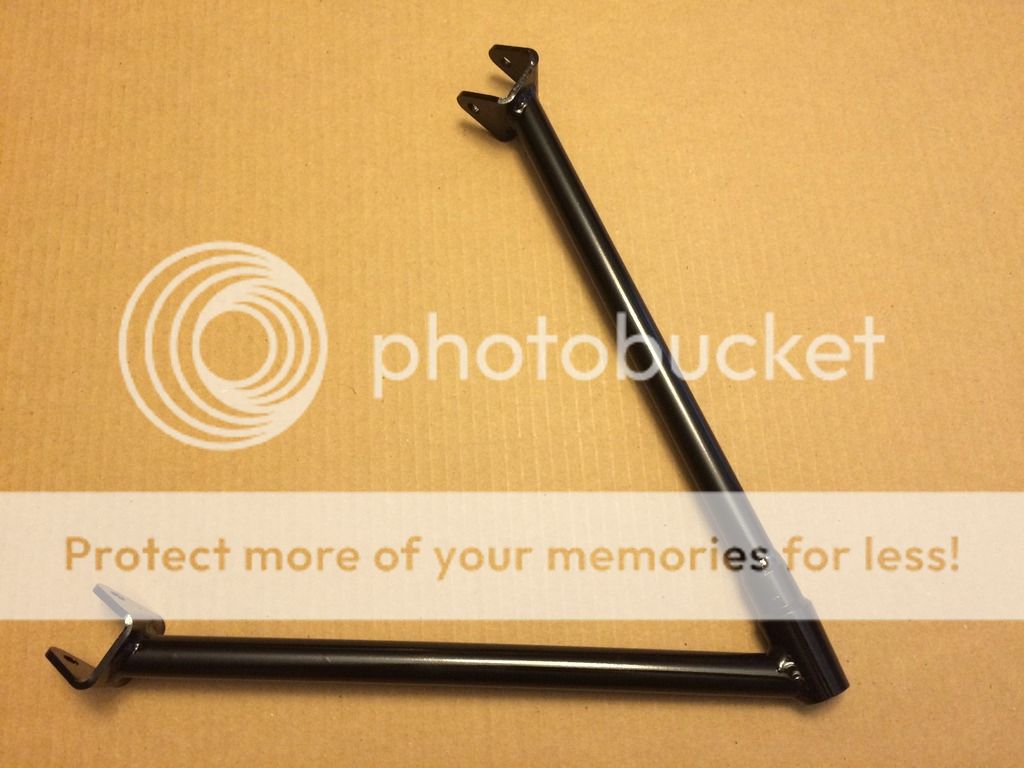
heres a pic of our upper arm. its made of 5/8 .049 wall cromo From what we could measure its the same as the stock upper, in tube dimension. Its pretty light. Its pretty awesome on how strong a simple triangle can be.

I have tested -15 and -17 front end viper and also sidewinder btx. Best easily was -17 narrow front end, I didn't like -15 front. It was way too nervous and needed more effort in every movement. I would also suggest to keep front narrow and little more forward than original. -17 model was significantly betterwhen spindle is couple inches forward with better caster angle.
Nikolai
TY 4 Stroke God
Great info. My buddy who is the Yami dealer will have the Apex version, both of us planned to run the narrow 2017 front end. I can simply move the front section of the jig further forward from the driveshaft. Or depending on how far back I can move the motor, I can bring the front frame rearward and build forward a-arms. I was trying to get the front pyramid/framework as compact as possible.
How much more forward would you suggest? 1"?, 2"?, 3"?
Barcode, I have read the same about the 2018 MC being better with the lower case and 8-tooth drivers. Definitely still an option at this point.
How much more forward would you suggest? 1"?, 2"?, 3"?
Barcode, I have read the same about the 2018 MC being better with the lower case and 8-tooth drivers. Definitely still an option at this point.
Surprisingly, lightest sled to drive in mountains is my brothers apex with 163" t-motion and 84 inch front end. We build it spring 2016, but haven't ride it much, maybe couple hundred km's. We are planning to do new front with spindle forward mod, about 2-4 inch forward is good. Now it is good to go sidehill but when trying to turn, it wants to go straight. Then comes point when sled wants to turn, but you need to be very carefull with throttle because after that certain point, sled will turn too easily. Therefore driving is little bit nervous and not very nice because you never know when that angle and acceleration is achieved and sled wants to make like 180 degree turn. That is mostly the t-motion problem but I've seen same behaviour in my nytro with stock front end. I took it in mountains and rode it long weekend, and it was like I said, way lightest to ride in mountains and easy terrain. We had -11 m8 and -17 sw btx and those were nearly as good. Btx was in stock setup and needed some adjustments before it was even in same mountains what comes to manouverability... M8 vas light and easy as we know, low center of gravity is easy to feel, even thou, I personally feel that apex was stil lighter to go sideways and turn when climbing.
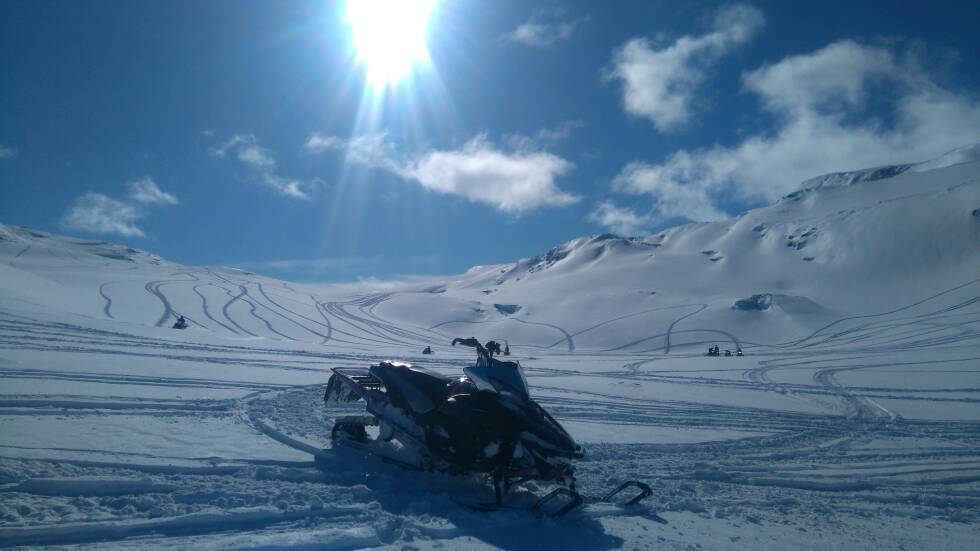
Weight is driving condition but only 7-8 litres gas in tank.
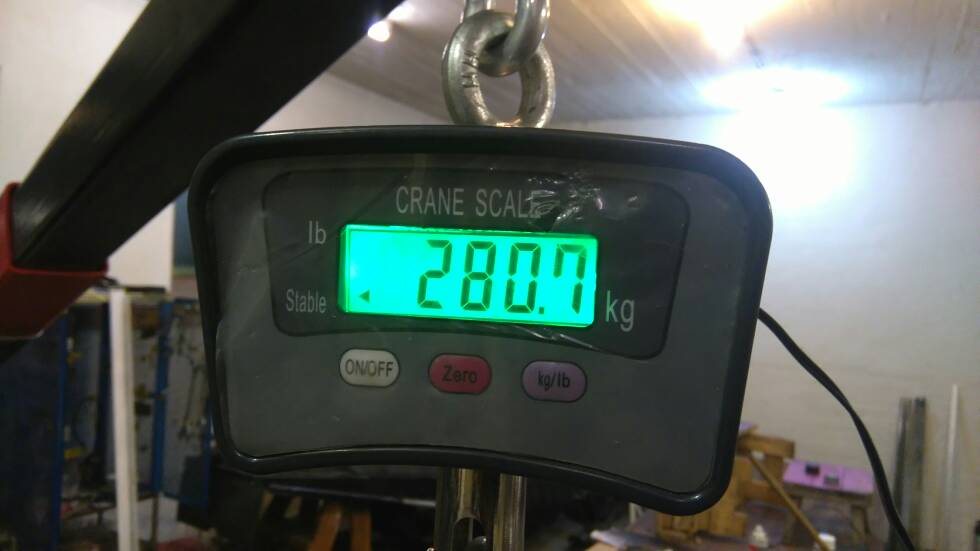
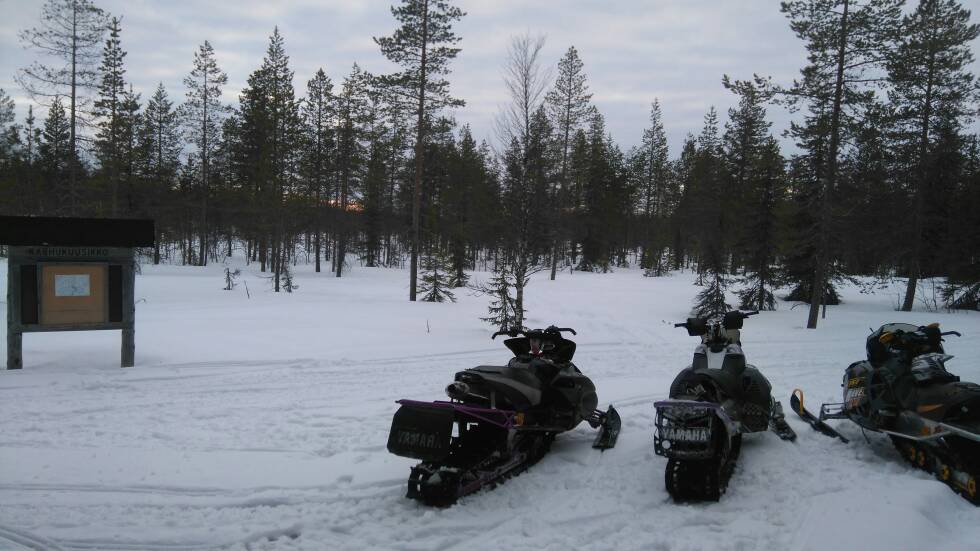
Im pretty sure most of you guys know or have seen our stuff. We've been having pretty fantastic results with +5 forward. Its just plain worked on pretty much every sled we've built a-arms for. We tried +1 and so on. We found pretty quick why the rest of the guys stopped at +3 or less was the fact that the shocks were limiting the further forward movement. Skinz got further because of the spherical bearings installed into the shocks. But we found at the extremes they still bound.
So that being said. If your going to move the entire factory 2016 forward then your set. If your going to just move the arms than you will need to re figure out the shock mounts and make sure they are even through the entire shock/a-arm movement. We use actual swivel mounts. And moved the upper mount more forward, so the shock is not to much more in a leaning back position.
So that being said. If your going to move the entire factory 2016 forward then your set. If your going to just move the arms than you will need to re figure out the shock mounts and make sure they are even through the entire shock/a-arm movement. We use actual swivel mounts. And moved the upper mount more forward, so the shock is not to much more in a leaning back position.

kinger
VIP Member
Barcode what is the physics of moving forward, are you transferring more weight to the rear? Also what is the impact on trail handling, have you found a line between good powder performance but nervous, twitchy, pushing, high speed trail handling? What I'm wondering is if it's good for powder is it good for trails to? Like say you had a 43" +5 kit for trails good, bad? Trying to learn why the push forward when I thought OEMs like the pro and summit had it pretty well figured out. Also impact on steering etc. thanks!
Sent from my iPhone using Tapatalk
Sent from my iPhone using Tapatalk
OEM's make stuff to fit everyone. Kinda a happy medium. Not much one way not to much the other. We stopped making trail kits, Mr. Sled had a good review of our trail kit for the Nytro. Its up here somewhere. We stopped because its not what or how we ride. Were off trail.
We found going forward made the sled more stable when on edge, and much easier to sidehill etc. Just plain works.
That being said. sorry Nikolai for derailing the thread. Looking forward to the new build.
Allan
We found going forward made the sled more stable when on edge, and much easier to sidehill etc. Just plain works.
That being said. sorry Nikolai for derailing the thread. Looking forward to the new build.
Allan
-
This site uses cookies to help personalise content, tailor your experience and to keep you logged in if you register.
By continuing to use this site, you are consenting to our use of cookies.
